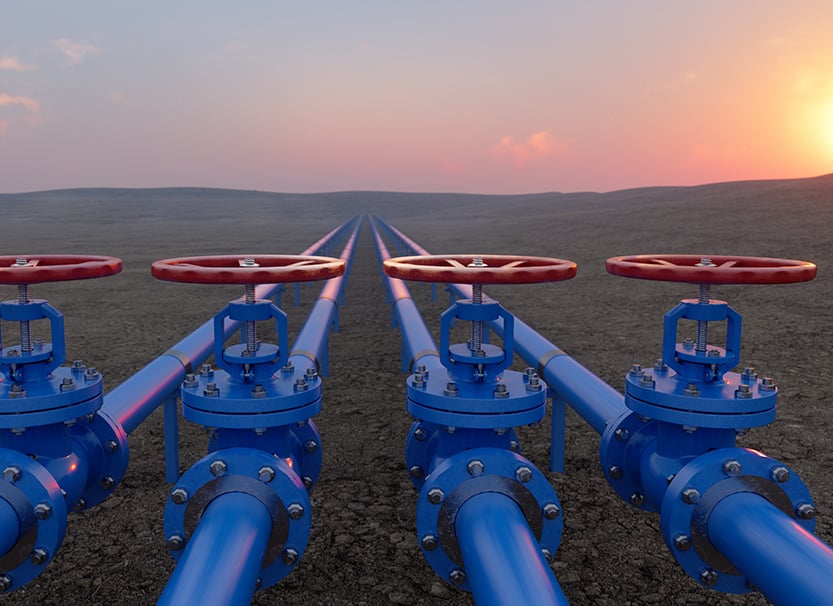
U.S. EPA Issues Draft Final Oil and Gas Methane Rule

The U.S. Environmental Protection Agency (EPA) released a draft of its final oil and gas methane rule on December 2, 2023. It may be some time before the final rule is officially published in the Federal Register, starting the clock on the rule’s compliance obligations. Interested parties will need that extra time to fully digest the 1,690-page draft final rule, which addresses methane emissions from new (in subpart OOOOb) and existing sources (in subpart OOOOc). Here are some of the rule’s key aspects to consider.
Oil and gas wells. The rule imposes new obligations for well completions, liquids unloading from gas wells, and the handling of associated gas from oil wells. EPA largely retains the supplemental proposed rule’s requirement for reduced emission well completions and requiring gas associated with oil well production to be routed to a sales line, used for authorized purposes at the site, or injected into another well. Similarly, EPA retains the proposal for liquids unloading to eliminate venting and route emissions to a control device through a closed vent system. However, the rule does change the associated gas requirements by breaking oil wells into three subcategories:
- Oil wells constructed 790 days or more after publication of the rule must route associated gas to a sales line, used on site or reinjected. Routine flaring is prohibited even upon a showing of technical infeasibility. The draft final rule acknowledges that the elimination of routine flaring was not discussed as an option previously, and EPA believes it can cure this problem by pushing the compliance date out by 790 days.
- Oil wells constructed between 60 days and 790 days after publication may route associated gas to a flare or control device if (1) they achieve at least 95% destruction efficiency and (2) the owner or operator can demonstrate that routing to a sales line or some other approved use (e.g., as fuel on site or reinjection) is technically infeasible. The technical infeasibility demonstration is demanding and must be renewed each year to allow for continued flaring. This option expires 790 days after the date of publication, requiring this class of wells to capture or use associated gas regardless of whether doing so is technically infeasible.
- Wells constructed between December 6, 2022 (the date of the supplemental proposed rule), and 60 days after the final rule’s publication may flare gas so long as the destruction efficiency and other criteria are met, including the annual demonstration of technical infeasibility. The routine flaring option does not expire for these wells.
Under Subpart OOOOc, existing wells will be subcategorized based on whether they emit more or less than 40 tons per year of methane. Low-producing wells (i.e., under 40 tons per year) may flare if the owner or operator makes an annual demonstration that routing gas to a sales line or otherwise using that gas is technically infeasible. All wells producing more than 40 tons per year must route to a sales line or use the gas for an approved purpose.
Controllers and pumps. EPA imposes a zero-emission standard on controllers with the exception of facilities in Alaska. Although EPA does not require any particular technology, the final rule clearly prefers electric controllers but allows for emission capture using a closed vent system and control device. Electing to control emissions, however, subjects the owner or operator to periodic monitoring requirements to ensure zero emissions. Facilities in Alaska may use low-bleed controllers, defined as emitting six standard cubic feet of gas per hour or less. Sites without access to electricity and using less than three diaphragm pumps may route to a vapor recovery unit achieving 95% control. However, all sites with access to electricity, and those without electricity but using three or more pumps, are subject to a zero-emission standard. If a facility does not use electric equipment, then it must periodically monitor equipment.
Leak detection and repair. The final rule uses numerous categories and subcategories when imposing leak detection and repair (LDAR) requirements. For instance, single wells are subject to quarterly audible, visual, and olfactory (AVO) inspections with a 15-day repair requirement, but multi-well pads require semi-annual optical gas imaging (OGI) or Method 21 monitoring plus quarterly AVO inspections with a 30-day repair requirement. Compressor stations are subject to quarterly OGI inspections and monthly AVO inspections. Natural gas processing plants will be subject to Appendix K, a new OGI monitoring protocol, if plant owners or operators choose to use OGI instead of Method 21. The final rule also includes a relatively complicated process for using advanced detection technologies for leaks.
Super Emitter Response Program. The final rule includes significant changes to this controversial proposed program, which had involved third parties being certified by EPA to detect “super emitter” events (defined as a methane leak of 100 kilograms per hour or more) using technologies approved by EPA. Also, in the proposal, the third parties could issue notifications of a potential super-emitter event directly to an alleged source, who would have to promptly investigate and respond.
In the final rule, third parties certified by EPA may still use certain tools to identify super-emitter events, but the authority is somewhat more limited. For example, detection technologies are limited to aerial or satellite surveys. No third party may attempt to enter a facility, and OGI monitoring outside of the fenceline is excluded from the program. Further, instead of directly notifying the facility potentially causing a leak, third parties must now notify EPA. If EPA determines that the certified third party’s information is accurate and complete, it will issue a notice to the potential source requiring information regarding its compliance with emission regulations and requiring an investigation to begin within five days of the notice and conclude within 15 days. Emission events will be subject to repair requirements, similar to LDAR. If a facility asserts that it could not detect a super-emitter emission event, it must certify that it made certain types of inquiries (e.g., review control device monitoring data, screen the entire facility with OGI or Method 21, review all maintenance records).
State regulation of existing sources. Under Subpart OOOOc, EPA is establishing “guidelines” for existing sources that would be subject to state regulation. However, not only are the guidelines for existing sources largely the same as the standards set for new sources, but the guidelines are called “presumptive standards” by EPA, presenting states with very little room for deviation. States must submit their own regulations for existing sources to EPA for review and approval within 24 months. Notwithstanding the flexibility afforded states under Section 111(d) of the Clean Air Act, EPA has been very clear in both the supplemental proposed rule and the draft final rule that it believes states should simply adopt the “presumptive standards” without alteration or face disapproval. State plans must set a compliance deadline no later than 36 months after the date of submission to EPA.
This post is as of the posting date stated above. Sidley Austin LLP assumes no duty to update this post or post about any subsequent developments having a bearing on this post.

